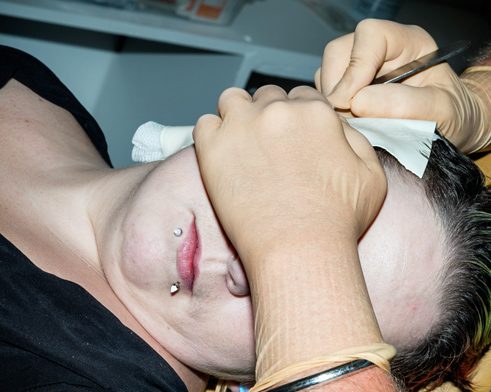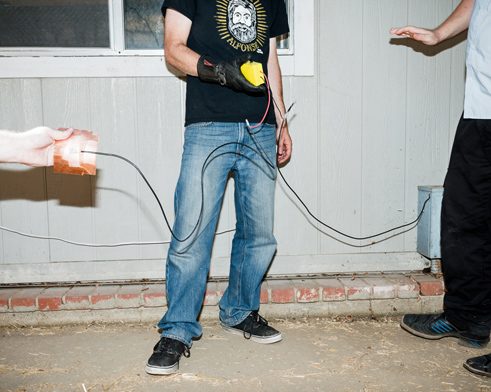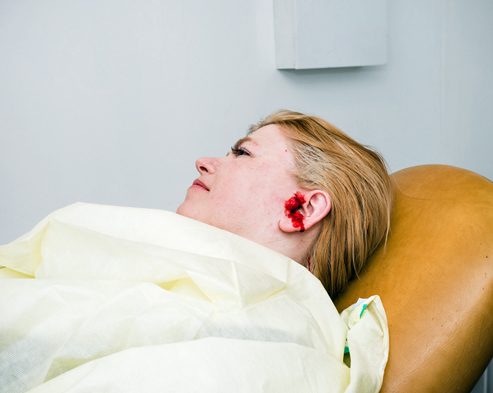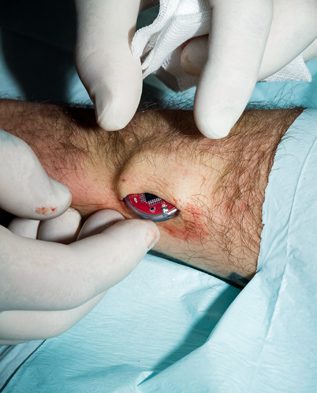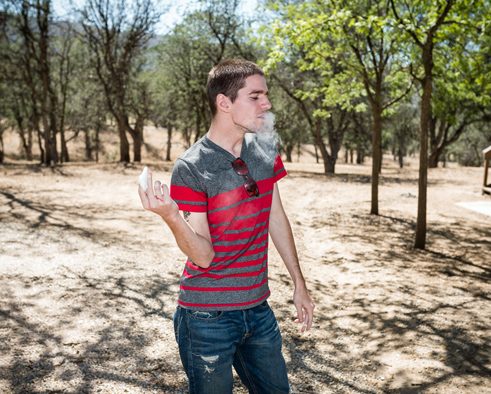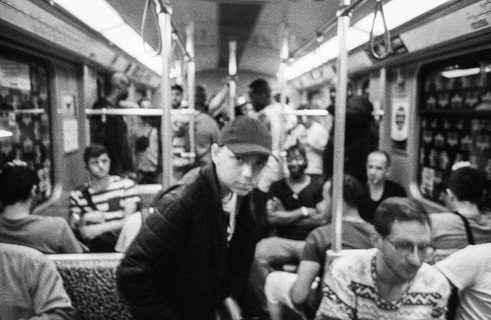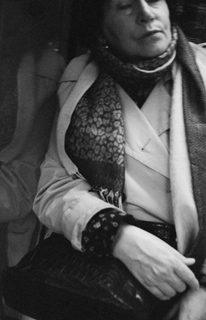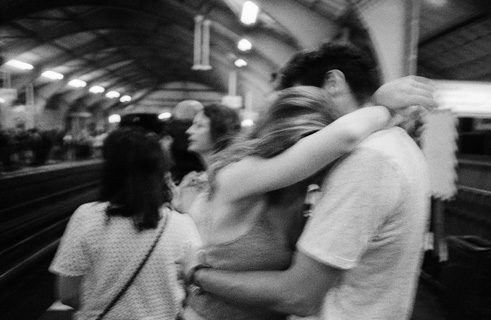Photographic training
A School of Vision
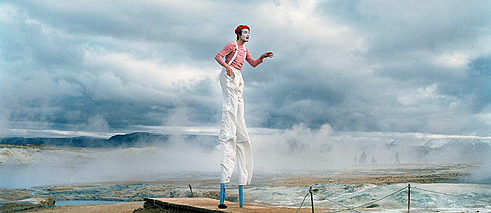
Photographers can work in many areas: in their own studio, for newspapers and magazines, or as free-lance artists. But what kind of training do they have to go through to get that far? One example – the Ostkreuz School of Photography in Berlin.
A clown totters along a wooden walkway surrounded by steam rising up from hot springs. With his stilts, his white face, and his red cap, he seems strangely out of place in this inhospitable landscape – but that would also apply to any other person. Johanna-Maria Fritz took this picture in Iceland as part of her photo series about circus life and used it to prompt discussions with her fellow pupils at the Ostkreuz School of Photography in Berlin. “This exchange of ideas was incredibly important,” says Fritz, whose circus photos have been printed in Zeitmagazin, for example, and shown at numerous exhibitions. In the meantime, Ms. Fritz, born in 1994, has completed her training, “You learn to take pictures from the bottom up, and, nevertheless, the lessons are not so schoolmasterly. There is a lot of scope for development and, at the same time, the contact with teachers and classmates is very close.”
International renown
In Germany, there are essentially three ways to become a professional photographer: by doing an apprenticeship in a photo studio, by doing a course at a university and by attending a private school, some of which are highly specialised. Each option has different focuses concerning the practical relevance, personal development or costs. Deciding which one is the right one depends on the professional goals to be pursued. In principle, however, the German university and school scene offers many opportunities and courses of study in this field, which also enjoy a good reputation internationally. For example, at the Kunstakademie Düsseldorf there is the purely artistic photography course that is completely tailored to the respective professor, then there is the stylistically more open approach at the Folkwang University of the Arts in Essen, not to mention the privately run Ostkreuzschule, which is operated by two members of the renowned photo agency, Ostkreuz-Fotoagentur.Back to the pinhole camera
“The Ostkreuzschule is a bit special”, says Hannes Wiedemann, who is in his final year at the school. “There are no grades, no examinations, but a lot of exchanging of ideas.” And the students basically go back to scratch, to the very beginnings of photography, “Working with analogue devices,” says Wiedemann, “is for most people very enlightening.”Thomas Sandberg, one of the school’s founders, compares the training at the Ostkreuzschule with that of a music school, “You learn how to play an instrument and all the other things you can do with it.” His courses begin with the pinhole camera and then move on into the classical fields of analogue photography: dark room techniques, lighting, black and white photography. “We attach great importance to sound craftsmanship,” says Sandberg. “All our lecturers come straight from the trade, because role models make the best teachers.”
Finding your own style
The course at the Ostkreuzschule is structured in modules that follow on from each other. The initial basic skills training is then followed first by smaller projects and then by larger ones. There is an induction term in which the students can “take their time” to find out what they really want to do and what they are interested in. Hannes Wiedemann took a whole year off to work on his series about people who have had electronic chips implanted in their bodies that has been published quite a few times. Like Wiedemann, most of the Ostkreuz students are interested in producing documentary photos for magazines, which is also what the Ostkreuz agency is famous for. In class, however, almost every genre is covered from architecture to fashion photography. For Thomas Sandberg, the decisive question he puts to every student is, “What do you want to do with what you have learnt?”No time to waste
Sandberg cannot and does not want to give any guarantees for the professional prospects of his graduates. He estimates that out of the eight students in his classes, “one to two” will later work as a photo artist or photojournalist. “Many qualities are necessary to be successful,” he says, “and these can only be trained in our students to a certain extent.” Johannes Kleinert, a student in his third term, sees it the same way. He is currently working on a report about people in the Berlin subway, which he himself describes as “subjective pictorial narrative”. He has already worked out that he will not be able to live alone from this form of photography. “Photographers with good technical training are always highly sought after,” says Kleinert. “Maybe I’ll find something in the field of portrait or stage photography.”In Germany, there are other schools of photography which are closer to the market and which see themselves as training centres for certain professional fields. The Fachhochschule Hannover, for example, specifically trains magazine and press photographers and organises internships for them during their studies. The Ostkreuzschule, on the other hand, prefers students to take the initiative themselves – the course requires students to attend school on only six days per month, but offers free access round the clock to the school’s technical equipment. As elsewhere, there are tuition fees. For Thomas Sandberg, however, this only becomes a problem when the students have to spend more time trying to earn money than they do on photography. Sandberg also sees a positive effect, “The students learn that they cannot afford to waste time, as will also be the case later when they start to work as a professional photographer.”
